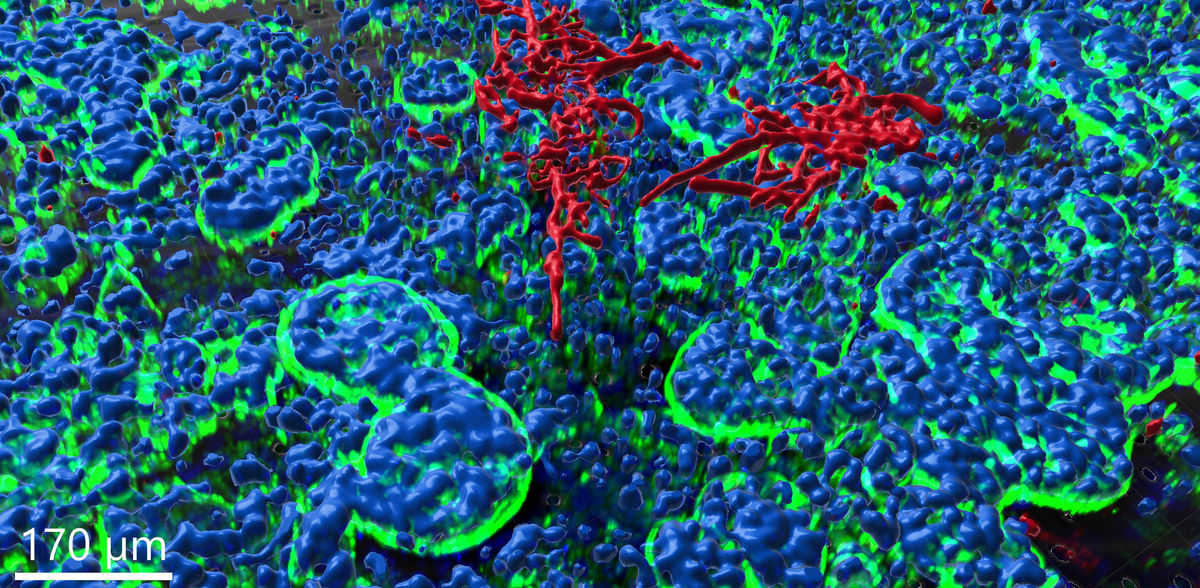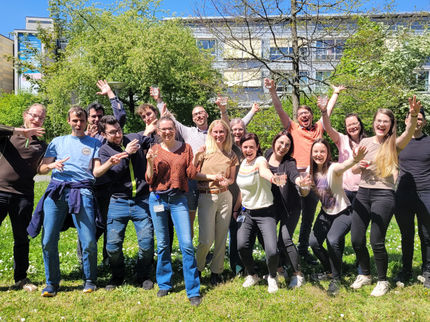An intestinal chip model takes research of fungal infections to a new level
Successful cooperation between science, clinic and start-up
Advertisement
The Jena-based biotech company Dynamic42 has developed an intestine-on-chip candidiasis model that allows for the quantification of the infection process. By combining microbiological and image-based analyses, the pathogen-host interactions can be analyzed much more precisely than is possible with conventional 2D models. In collaboration with the Hans Knöll Institute and Jena University Hospital, Dynamic42 experts have made important progress in understanding candidiasis, a potentially life-threatening fungal infection. The results have been published in the March issue of the journal “Biomaterials”.
Dynamic42 GmbH, founded in 2018 by employees of the Jena University Hospital, develops innovative 3D in vitro microphysiological test systems known as organs-on-chip (OoC). In these biochip-based microfluidic systems, the researchers simulate human physiology in the laboratory – human cells react in vitro almost as they do in vivo. The model systems can be used at all stages of drug development, from basic research on molecular mechanisms to pharmacological evaluation of drugs in preclinical research. With its organ models, Dynamic42 helps its research partners to avoid animal testing.
A concrete example of the relevance of organ-on-chip technology is the study of pathogens such as Candida albicans. This yeast fungus colonizes the skin and mucous membranes, including the human intestine, without causing symptoms. In certain circumstances, it can lead to dangerous infections that can be life-threatening. In Germany, around 40,000 people are affected by an invasive Candida infection every year.
Interactions between fungus and host precisely reproduced
The present scientific work focuses on the development and application of a new intestinal chip candidiasis model that accurately imitates the relevant interactions between pathogen and host such as adhesion, invasion, and dissemination in the tissue. Since macrophages have been integrated into the system, an inflammatory response can also be simulated. By combining microbiological and image-based analyses, the model enables an accurate quantification of both the severity of the infection and the efficacy of antifungal drugs such as caspofungin.
“Leveraging an intestine-on-chip model enables fascinating insights into C. albicans pathogenicity and morphological alterations during antifungal treatment. The chip platform allows us to study invasiveness and translocation of the fungus in different tissue compartments. By applying the treatment via a perfusion system, we can further simulate an intravenous administration as it is conducted in human patients.”, says Tim Kaden, PhD student at Dynamic42, about the advantages of the system.
Dr. Alexander S. Mosig, head of the “inspire lab” at Jena University Hospital adds: “Our joint work not only offers completely new insights into the pathogenesis of candidiasis, but also promising approaches for its treatment. The combination of innovative models and advanced analytical techniques enables us to develop more effective strategies against this life-threatening infection.”
Original publication
Tim Kaden, Raquel Alonso-Roman, Parastoo Akbarimoghaddam, Alexander S. Mosig, Katja Graf, Martin Raasch, Bianca Hoffmann, Marc T. Figge, Bernhard Hube, Mark S. Gresnigt; "Modeling of intravenous caspofungin administration using an intestine-on-chip reveals altered Candida albicans microcolonies and pathogenicity"; Biomaterials, Volume 307
Other news from the department research and development
Most read news
More news from our other portals
Something is happening in the life science industry ...
This is what true pioneering spirit looks like: Plenty of innovative start-ups are bringing fresh ideas, lifeblood and entrepreneurial spirit to change tomorrow's world for the better. Immerse yourself in the world of these young companies and take the opportunity to get in touch with the founders.

















































